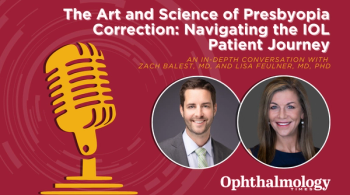
Prophylactic MMC helps prevent haze, improve acuity
Off-label use of mitomycin-C appears to prevent haze and improve visual acuity in patients with complicated LASIK flaps when used in conjunction with PTK or PRK.
Key Points
"We feel that this is a safe technique when used for the prevention of corneal haze when surface treatment is performed over complicated flaps," said Dr. Epstein. This technique avoids the need to make a new flap and removes pathology, he said.
"We like to use this technique routinely for treating LASIK patients whose surgery was a long time ago and who come in for late enhancements," Dr. Epstein said. "It's not necessarily used on every PRK patient. We believe it should only be used in 'high-risk' situations."
He said that he and his colleagues have been ardent supporters of MMC in refractive surgery since his partner, Parag A. Majmudar, MD, first-authored their original study on this subject (Ophthalmology. 2000;107:89-94). They initially used topical MMC to treat patients with haze and subepithelial fibrosis after RK, PRK, and LASIK, Dr. Epstein said; an ongoing investigation involves the prophylactic use of MMC for complicated LASIK flaps.
"Our belief was that, in treating patients who are at high risk with prophylactic adjunctive MMC, we would prevent the haze that was likely to occur following such surface treatments over flaps," Dr. Epstein said.
Newsletter
Don’t miss out—get Ophthalmology Times updates on the latest clinical advancements and expert interviews, straight to your inbox.


















































.png)


